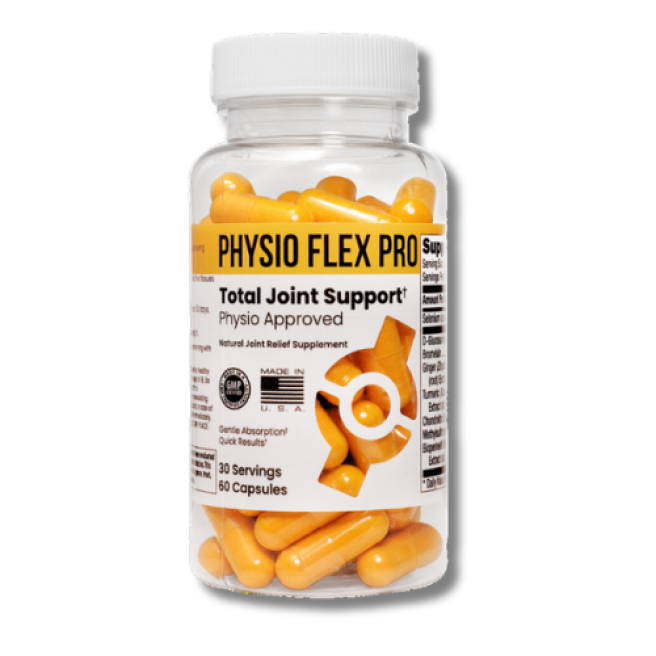It can be difficult to walk properly when your feet feel tight, but the swelling isn't visible. This can be a subjective sensation of discomfort, constriction, and pressure in the feet.
Aside from infections, foot tightness or pain can also be associated with neuropathy, muscle tightness or cramps, and nerve compression. Additionally, prevalence and demographic factors such as age, gender, lifestyle factors, diabetes, and footwear choices can result in a tight feeling of the feet.
Learning the tight feeling of the feet without swelling can be complex. But, this article seeks to digest and explore its causes and diagnosis as detailed as possible.
By the end of this article, you can have further insights into foot tightness and how you can treat and prevent it from hindering your daily foot movements and athletic performance.
Understanding the Sensation
Anatomy of the Foot

The foot, as a crucial body part, is a remarkable and complex structure that plays an essential role in supporting the body's weight, facilitating locomotion, and maintaining balance. To provide mobility, shock absorption, and stability, the foot consists of bones, muscles, joints, tendons, ligaments, and arches.
The critical function of the foot is to support the body's weight during running, standing, walking, and other food-related activities. Other crucial functions involve balance, fine motor control, terrain adaptation, and shock absorption.
As a region of the body that's highly rich in sensory, the foot contains an intricate network of nerves that provide information regarding various sensations. The sensations of the foot are divided into four: tactile, pain, temperature, and proprioception. Tactile sensation refers to the ability to perceive pressure and touch.
The densely populated skin with sensory receptors on the soles of the feet is called mechanoreceptors. Pain sensations or nociceptors can detect potentially harmful stimuli such as sharp objects, excessive pressure, and extreme temperatures. Temperature sensations or thermoreceptors allow us to detect when the foot is in contact with hot or cold surfaces to avoid discomfort or injury.
Lastly, proprioception refers to specialized receptors in the joints, muscles, and tendons of the foot that provide feedback to the brain about the position and movement of the foot.
The nerves of the foot are divided into five: sciatic, tibial, common fibular, sural, and plantar. As the largest nerve in the body, the sciatic nerve originates in the lower back and grows down the back of the thigh.
The tibial nerve runs through the ankle to the back of the calf to provide motor innervation to several muscles of the foot and sensory innervation to the sole. The deep and superficial fibular nerve is divided by the common fibular nerve. The deep fibular nerve supplies motor innervation to the muscles that control dorsiflexion, while the superficial fibular nerve provides sensation to the top of the toes and foot.
The sural nerve provides sensory innervation to the lateral aspect of the foot and ankle, and plantar nerves impose sensory and motor functions.
The Sensation of Tightness
A 1954 article from the National Library of Medicine provided a technical explanation of the tight feeling of the foot. The extensor muscle becomes inadequate, and the individual experiences an almost painful feeling of tightness in the sole as a greater proportion of the body weight falls onto the anterior part of the foot when the toe extension requires greater force. To relieve this painful sensation, the individual tends to invert his foot at this stage voluntarily.
According to the Certified Foot & Ankle Specialists, others complain of foot numbness for causes such as extreme tightness, weakness, cramping or freezing sensation along with numbness in the legs, and itching. In relation to cramping or freezing sensation, this can occur due to electrolyte imbalances (low magnesium or potassium), dehydration, and muscle fatigue.
Moreover, feelings of tightness can manifest due to peripheral neuropathy, which affects the nerves in the feet. Common causes of neuropathy are alcohol abuse, certain medications, and diabetes.
Take note that tightness and swelling are different conditions in the foot. Tightness is a subjective sensation of discomfort and pressure in the foot. This doesn't give visible changes in the foot's appearance, so the skin can appear normal without swelling. In terms of swelling, this is an increase in the size or volume of the foot due to inflammation. Therefore, the affected area can be visibly enlarged or puffy.
Causes of Tightness in Feet
Medical Conditions
Diabetes, a chronic and metabolic disease, impacts foot health. A 2010 study from the Shifa College of Medicine discovered that the majority of patients with diabetes in Pakistan don't pay proper attention to their feet due to lack of foot care education.
Mechanical stresses can cause calluses and corn from poorly fitted shoes. Cellulitis may occur when keeping wet feet predisposed to fungal infections. Take note that ulcerations and amputations may result due to improper foot care.
On the other hand, arthritis-related conditions are also associated with foot health. A 2017 study showed a high prevalence of foot and ankle problems for patients with rheumatoid arthritis. Since rheumatoid arthritis can also affect joints in the hands, the self-care ability of patients with rheumatoid arthritis can be diminished.
Lifestyle Factors
Footwear choices can either support or contribute to various foot-related problems, so they significantly impact foot health. Some key functions of footwear choices on foot health are shock absorption, heel height, proper fit, and activity-specific shoes.
Speaking of activity-specific shoes, this is crucial if you need shoes for a specific activity, such as for exercise or a particular sport. Depending on the activity, the utilization of shoes may vary to avoid foot discomfort or pain.
A 2016 study showed that four areas related to "shoe fit" were identified: practicalities, personal, purpose, and pressures. This study aims to enable patients to make healthier shoe choices to contribute to their foot health and mobility ingredients.
Physical activity and standing for long periods have various effects on the body, and the outcomes can be positive and negative. Physical activity affects foot health, such as blood circulation, foot health, and weight management. While extended periods on foot health can include muscle fatigue, arch strain, and joint stress.
Diagnosis and Treatment
Diagnosis Procedures
Physical examination is usually performed by a healthcare provider like an orthopedic specialist or podiatrist to assess your feet's condition and identify any possible issues. Implementing physical examination involves a medical professional asking about your patient history and a visual inspection to assess your overall appearance.
Your medical history is crucial to know about your current symptoms, information about footwear choices, and if you have other existing conditions apart from foot-related pain. A medical professional will look for any signs of deformities and fungal infection in visual inspection.
Treatment Options
When it comes to medications, remember that taking such medications to treat the tight feeling in your foot depends on the cause of the symptom or underlying condition. Inflammation-related conditions require medications like corticosteroids and NSAIDs to reduce inflammation.
Muscle cramps require taking muscle relaxants like cyclobenzaprine to relieve muscle tightness. If tightness is related to diabetic neuropathy, medications like insulin and metformin can manage blood sugar levels and alleviate symptoms.
Physical therapy and exercises are beneficial treatments for the tightness feeling in the foot. This is particularly true when the tightness is related to imbalances, muscle tension, or conditions like tendinitis or plantar fasciitis. A study from the Journal of Orthopaedic & Sports Physical Therapy showed that manual therapy for plantar fasciitis includes the manipulation of ankle and foot joints soft tissue manipulation techniques, and mobilization.
It was demonstrated by several case series that there was rapid improvement in function and pain following the manipulation and mobilization techniques to the joints. On the other hand, several exercises such as calf stretch, ankle alphabet, and heel raises can ease the tight feeling of the foot.
When related to conditions like cramps, muscle tension, and inflammation, lifestyle and dietary factors play a role in preventing and managing the tightness of the foot. Lifestyle recommendations include adequate rest, hydration, stress, and weight management.
Dietary recommendations often involve eating anti-inflammatory foods like turmeric, ginger, berries, and salmon. Ensure you include Vitamin D and Calcium in your daily routine and limit salt intake.
Prevention Strategies
Footwear Selection
Here are ways to choose the right size and style of your footwear:
- Measure your feet
- Consider width
- Leave adequate toe room
- Check arch support
- Heel height
- Material quality
- Cushioning
Keep in mind that proper fit and comfort are necessary to prevent the frequency of foot tightness, even without swelling. Choosing the right footwear allows you to stay on track regarding your physical activities and improves athletic performance.
You can also consider specialized footwear for specific foot conditions:
Diabetic shoes

These shoes have extra width and depth to create a seamless interior to minimize friction, known as orthotic insoles, which protect against pressure points through cushioning.
Arthritis footwear

These shoes provide a wide and deep toe box with adjustable closures for comfortable use. To reduce pressure on the joints, some models have rocket soles.
Plantar fasciitis shoes
These shoes are designed to reduce strain on the plantar fascia and provide arch support. They cushion the forefoot and heel with contoured soles for good arch support. Some models have a slight heel cup to relieve tension on the Achilles tendon.
Lifestyle modifications
Incorporating foot exercises and balancing physical activity and rest are valuable strategies to prevent and manage the tightness in the foot. Consider common foot exercises such as foot rolling, tower crunches, and toe flexor and extensor exercises. It's important to maintain balance regarding rest and physical activity.
Don't forget to listen to your body and provide rest days despite proper stretching routine and foot elevation. Always avoid intense workouts that can worsen your foot tightness condition.
FAQ Section
1. Why do my feet feel tight but are not swollen?
It's possible to feel tightness in your feet despite not being swollen for several reasons. These include muscle tension, footwear issues, foot fatigue, neuropathy, or plantar fasciitis.
2. Can tightness in the feet be a sign of a serious condition?
It's possible that feet tightness can be a sign of serious conditions such as injury, diabetic neuropathy, nerve disorders, tendon or ligament problems, and rheumatological disorders.
3. What treatments are available for tightness in the feet?
Various possible treatments to reduce tightness in the feet include stretching and feet exercises, proper footwear, rest and elevation, warm compress, foot massage, and nerve mobilization techniques (this is provided by a physical therapist).
4. How can I prevent my feet from feeling tight?
It was mentioned in the previous sections of this article that supplements can help prevent your feet from feeling tight. We recommend taking Physio Flex Pro, especially if you're looking for a comprehensive supplement with natural ingredients like ginger extract, turmeric, glucosamine, chondroitin, etc. All of which have been shown to reduce inflammation and ease joint pain.
Physio Flex Pro is made in the U.S. in an FDA-registered and cGMP-verified facility to ensure the supplement's safety for utilization.
Conclusion
To sum it up, tightness in your feet is usually a subjective sensation of discomfort. This uncomfortable, tight feeling can occur in conditions such as diabetes, rheumatoid arthritis, neuropathy, and plantar fasciitis.
In treating the tightness of the foot, consider physical examinations, medications, and dietary and lifestyle recommendations. You can prevent your feet from feeling tight by choosing the proper footwear and considering its size, style, and even specific foot conditions.
Before starting any treatment, seeking professional help to maintain foot health is crucial. Professional help provides specialized knowledge, customized treatment, improved comfort, and a better understanding of how and why foot tightness occurs.







